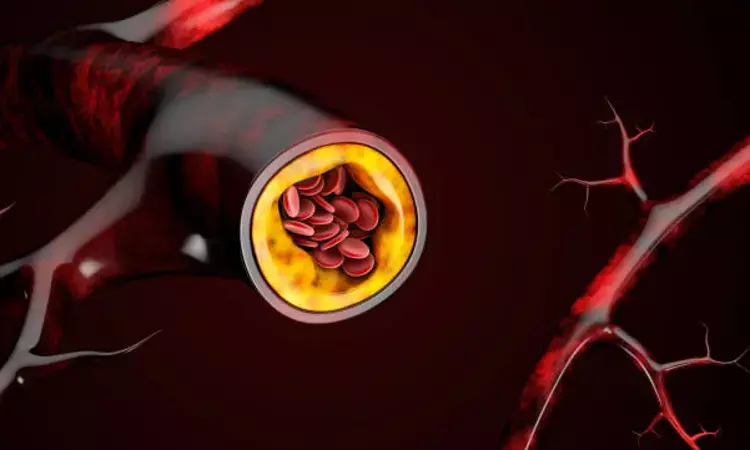- Home
- Medical news & Guidelines
- Anesthesiology
- Cardiology and CTVS
- Critical Care
- Dentistry
- Dermatology
- Diabetes and Endocrinology
- ENT
- Gastroenterology
- Medicine
- Nephrology
- Neurology
- Obstretics-Gynaecology
- Oncology
- Ophthalmology
- Orthopaedics
- Pediatrics-Neonatology
- Psychiatry
- Pulmonology
- Radiology
- Surgery
- Urology
- Laboratory Medicine
- Diet
- Nursing
- Paramedical
- Physiotherapy
- Health news
- Fact Check
- Bone Health Fact Check
- Brain Health Fact Check
- Cancer Related Fact Check
- Child Care Fact Check
- Dental and oral health fact check
- Diabetes and metabolic health fact check
- Diet and Nutrition Fact Check
- Eye and ENT Care Fact Check
- Fitness fact check
- Gut health fact check
- Heart health fact check
- Kidney health fact check
- Medical education fact check
- Men's health fact check
- Respiratory fact check
- Skin and hair care fact check
- Vaccine and Immunization fact check
- Women's health fact check
- AYUSH
- State News
- Andaman and Nicobar Islands
- Andhra Pradesh
- Arunachal Pradesh
- Assam
- Bihar
- Chandigarh
- Chattisgarh
- Dadra and Nagar Haveli
- Daman and Diu
- Delhi
- Goa
- Gujarat
- Haryana
- Himachal Pradesh
- Jammu & Kashmir
- Jharkhand
- Karnataka
- Kerala
- Ladakh
- Lakshadweep
- Madhya Pradesh
- Maharashtra
- Manipur
- Meghalaya
- Mizoram
- Nagaland
- Odisha
- Puducherry
- Punjab
- Rajasthan
- Sikkim
- Tamil Nadu
- Telangana
- Tripura
- Uttar Pradesh
- Uttrakhand
- West Bengal
- Medical Education
- Industry
Statins slow plaque progress by increasing its calcium density and reduce ASCVD risk: JAMA

The use of statin significantly reduces the progression of Coronary Atherosclerotic Plaque Composition; thereby reducing atherosclerotic risk suggests a study published in the JAMA Cardiol.
The density of atherosclerotic plaque forms the basis for categorizing calcified and noncalcified morphology of plaques.
A study was conducted by Rosendael A et. al to assess whether alterations in plaque across a range of density measurements provide a more detailed understanding of atherosclerotic disease progression.
The researchers enrolled a total of 857 patients who underwent serial coronary computed tomography angiography 2 or more years apart and had quantitative measurements of coronary plaques throughout the entire coronary artery tree. The study was conducted from 2013 to 2016 at 13 sites in 7 countries. The main outcome was progression of plaque composition of individual coronary plaques.
Six plaque composition types were defined on a voxel-level basis according to the plaque attenuation:
- Low attenuation
- Fibro-fatty
- Fibrous
- Low-density calcium
- High-density calcium and 1k
The progression rates of these 6 compositional plaque types were evaluated according to the interaction between statin use and baseline plaque volume, adjusted for risk factors and time interval between scans. Plaque progression was also examined based on baseline calcium density. Analysis was performed among lesions matched at baseline and follow-up. The researchers conducted the data analyses from August 2019 through March 2020.
The results of the study are as follows:
- In total, 2458 coronary lesions in 857 were included.
- Untreated coronary lesions increased in volume over time for all 6 compositional types.
- Statin therapy was associated with volume decreases in low-attenuation plaque and fibro-fatty plaque and greater progression of high-density calcium plaque and 1K plaque.
- When analyses were restricted to lesions without low-attenuation plaque or fibro-fatty plaque at baseline, statin therapy was not associated with a change in overall calcified plaque volume but was associated with a transformation toward more dense calcium.
- Interaction analysis between baseline plaque volume and calcium density showed that more dense coronary calcium was associated with less plaque progression.
Thus, the researchers concluded that there is an association of statin use with greater rates of transformation of coronary atherosclerosis toward high-density calcium. A pattern of slower overall plaque progression was observed with increasing density. All findings support the concept of reduced atherosclerotic risk with increased densification of calcium.
Reference:
Association of Statin Treatment With Progression of Coronary Atherosclerotic Plaque Composition by Rosendael A et. al published in the JAMA Cardiol.
doi:10.1001/jamacardio.2021.3055
Dr. Shravani Dali has completed her BDS from Pravara institute of medical sciences, loni. Following which she extensively worked in the healthcare sector for 2+ years. She has been actively involved in writing blogs in field of health and wellness. Currently she is pursuing her Masters of public health-health administration from Tata institute of social sciences. She can be contacted at editorial@medicaldialogues.in.
Dr Kamal Kant Kohli-MBBS, DTCD- a chest specialist with more than 30 years of practice and a flair for writing clinical articles, Dr Kamal Kant Kohli joined Medical Dialogues as a Chief Editor of Medical News. Besides writing articles, as an editor, he proofreads and verifies all the medical content published on Medical Dialogues including those coming from journals, studies,medical conferences,guidelines etc. Email: drkohli@medicaldialogues.in. Contact no. 011-43720751


